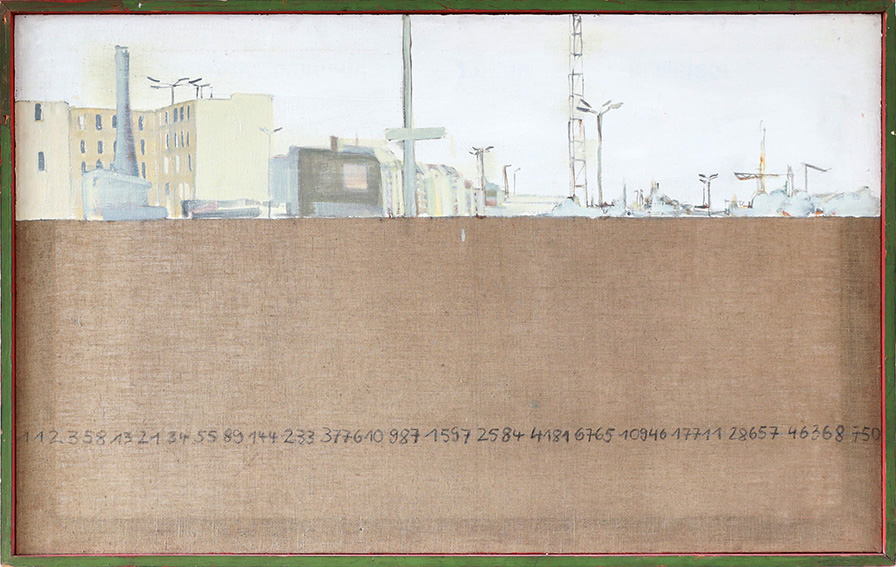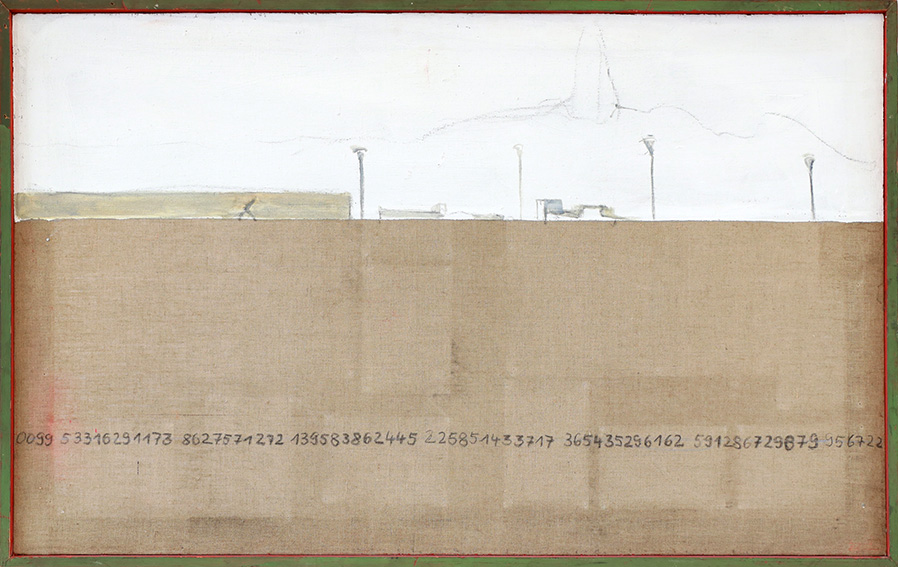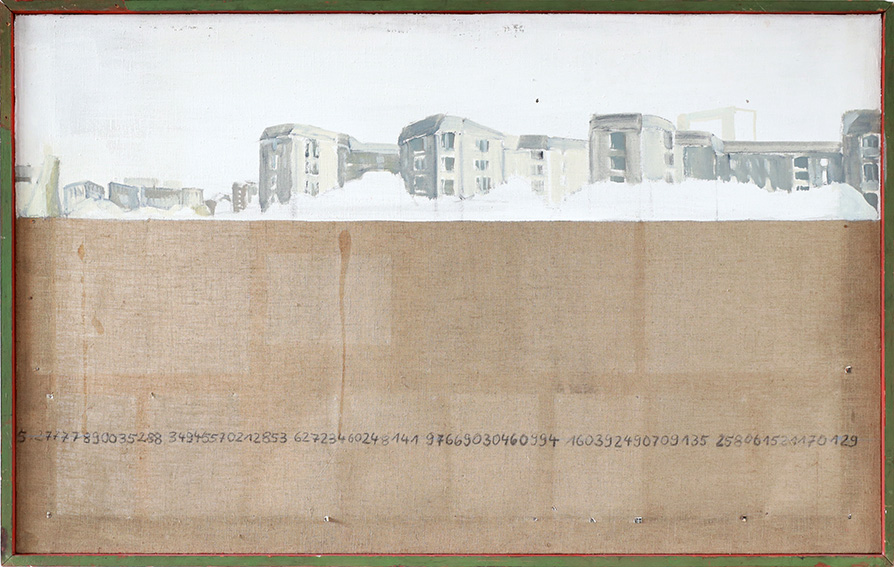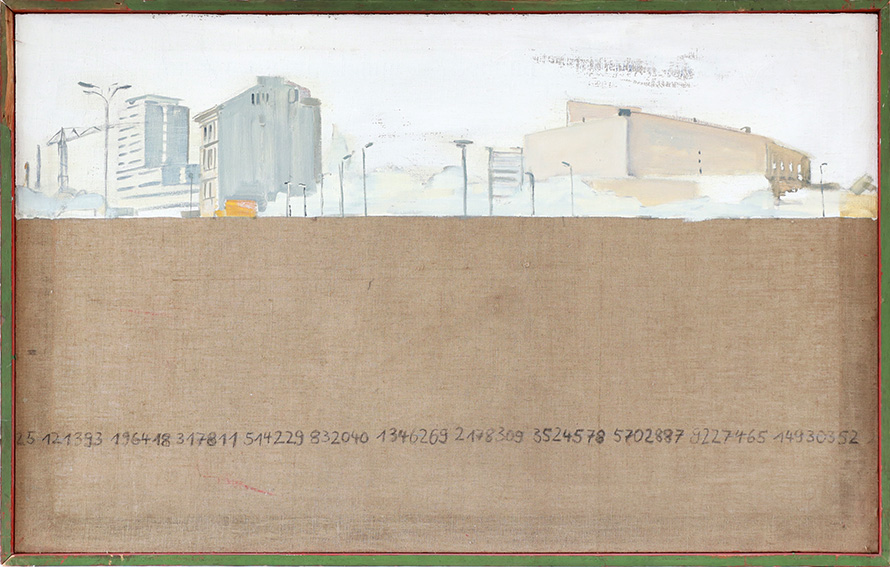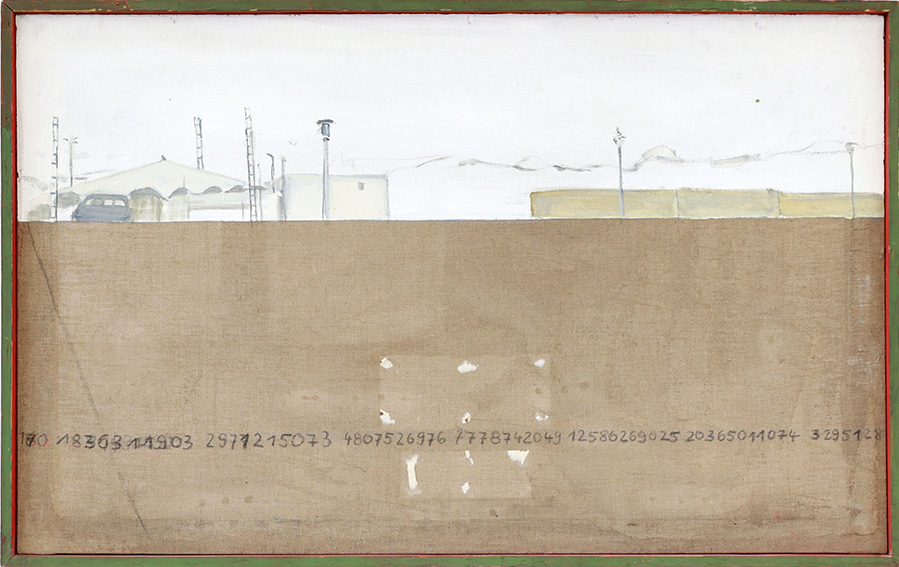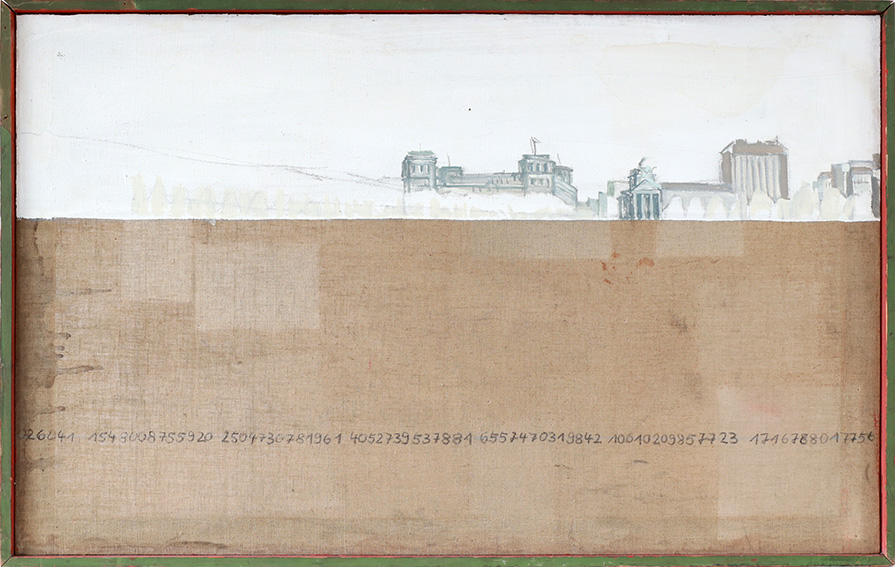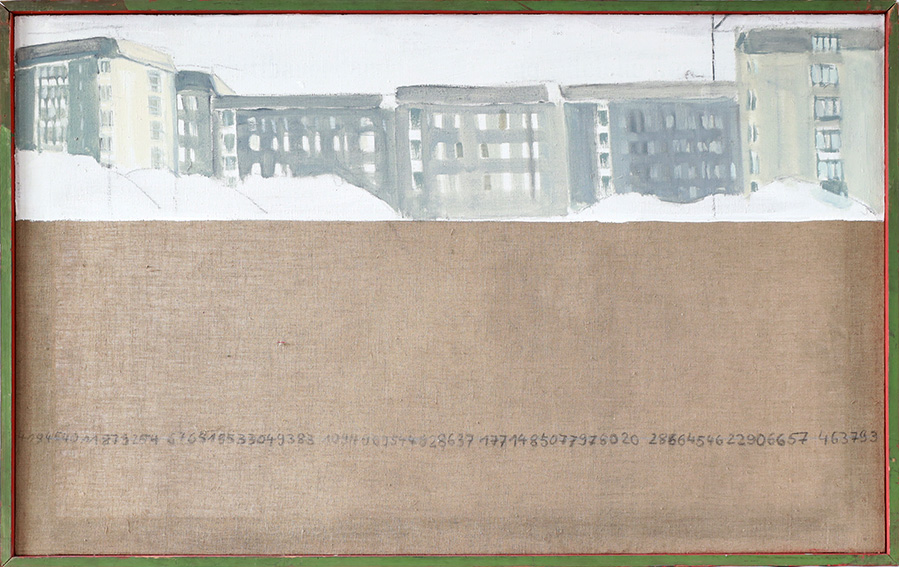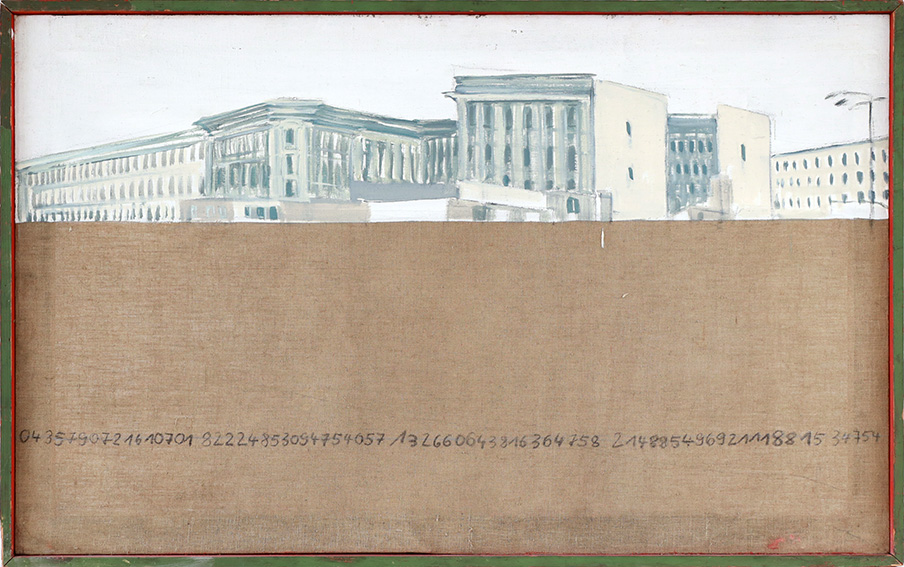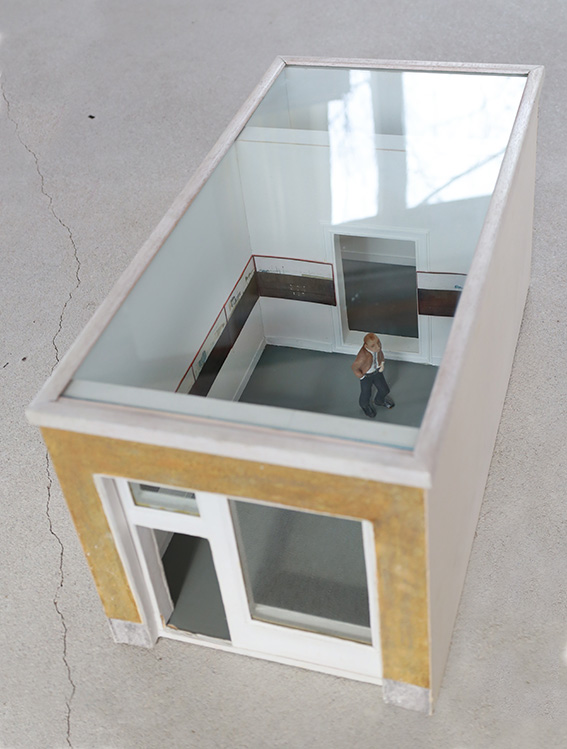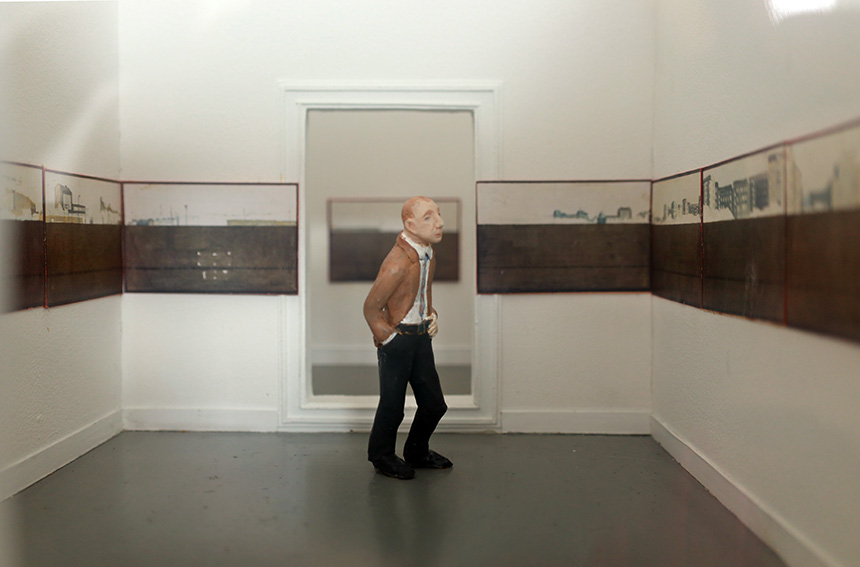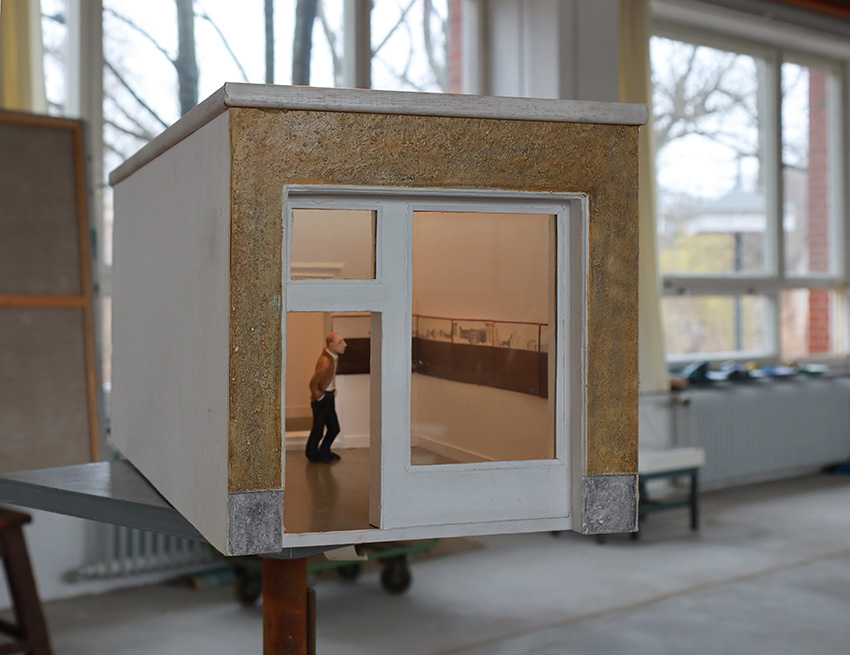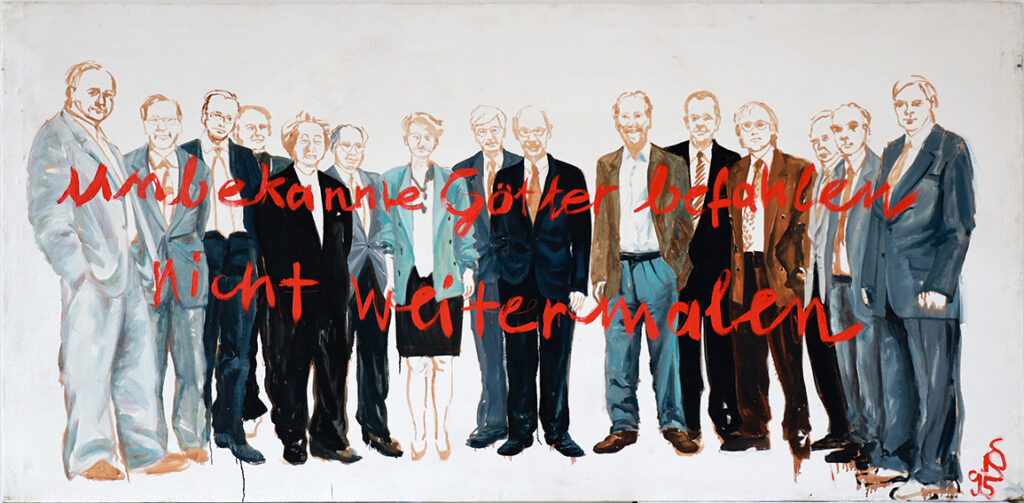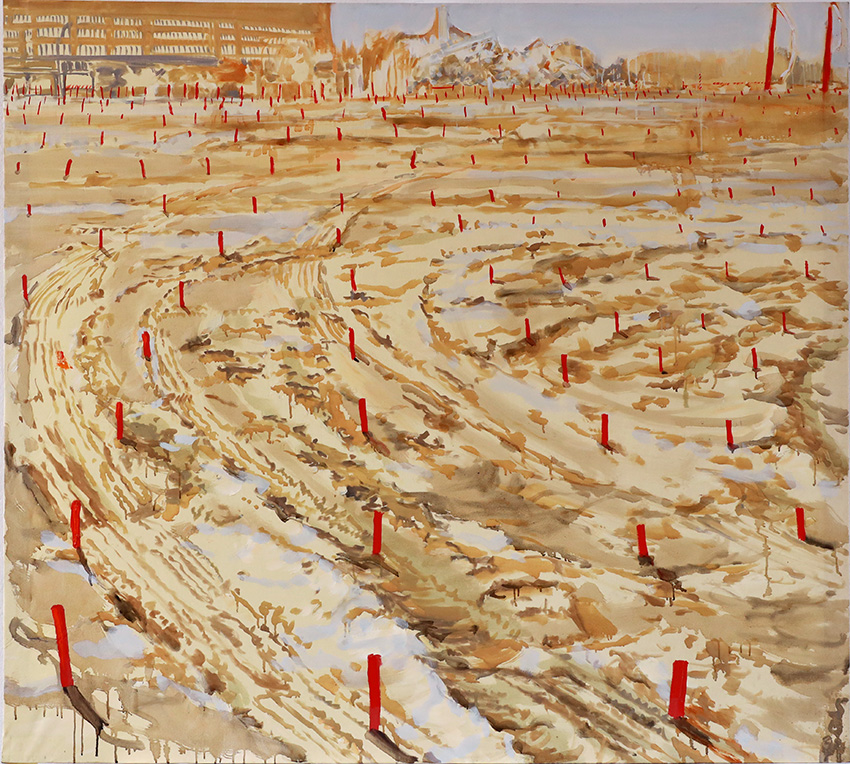
Potsdamer Platz a void in the city
At Potsdamer Platz in 1995, the linguistic helplessness of “there stood and there was” is no longer sufficient to describe it. Theare was nothing – a void with a wall. Th Wall was no longer seen. For those in the western part of the city who lived with it without historical resentment and without personal significance, it was almost the natural boundary of the perceptual space. What makes the mediability of this time at Potsdamer Platz seem impossible is the former emptiness.
A state of functionlessness and expectation that Stefanie Bürkle has captured in her 11-part series of paintings. The eleven panels form a panorama of the square, taken from the middle of the wasteland, where in the mid-1990s construction containers provided temporary accommodation for the first inhabitants.
At the lower parts of the paintings the canvas have been left untreated. The yellowed and empty canvas is both a parable and a realistic image. The haphazardly churned up earth also takes on this color of dust and soil. In the upper part, the silhouette of the city rises above the constructed horizon from a center that does not yet exist. It will rarely exist when the horizon is obscured by clinkered towers and the city pushes itself from the upper third into the raw canvas. Houses, cranes and masts stand on the raw canvas in glazed shades of grey and only partially hesitant layers of color. The city is desecrated, there is no living being in it except for a moving shadow on a wall.
The metropolis of Berlin becomes a strip of different facades. The recognizability of individual buildings makes us forget the interchangeability of the facades. The all-German and German-German (architectural) history of Berlin is lined up in the neighborhood of the view. Weinhaus Huth and Esplanade, the solitary buildings of a development that can only be reconstructed historically. National Library and Philharmonic Hall. The Reichstag and the prefabricated buildings on Wilhelmstraße and in between, the gaps left by the World War II and the voids of the Cold War.
All panels follow the rules of the golden ratio in terms of aspect ratio and composition. The classical understanding of beauty through harmony with the aim of finding the divine in man. A series of numbers runs through the lower, raw part of the canvas across the 11 -part series “The golden section through Potsdamer Platz”. The series of numbers is known in mathematics as the Fibonacci series. Each number is the sum of the two preceding ones. This series is significant for the mathematical analysis of beauty. Here the value of any Fibonacci sum divided by the previous sum is approximately Phi. The measure of the golden ratio. Beauty as a reflection of divine order. Is it any wonder that the same series of numbers is also used to calculate rabbit populations and stock market prices?
Potsdamer Platz has never been further away from the city than it is today. The construction site is a hermetically sealed area. Driving through it only affords a quick glimpse of an orderly terrain of alien logic. The demolition of the Bellevue Tower, as captured in the work “Before and After”, was the starting signal for a course whose direction remained hidden for a long time. Is the pile of rubble that seems to overgrow the buildings on the horizon the before or the after? The merging of two panels of disparate painting styles into one picture underlines the lack of clarity about the direction.
This was followed by the order of the building site up to the point where gods descended again to depict Olympus in the group photo. The picture “Der Olymp vom Potsdamer Platz” is Stefanie Bürkle’s last examination of the construction work at Potsdamer Platz for the time being. A leaflet with the aforementioned group photo of the laying of the foundation stone served as a model. The golden section at Potsdamer Platz has been completed. The faces of the Olympus of builders and architects are outlined with just a few strokes. Only the suits are painted in. The square remains a white canvas. The lettering is based on Sigmar Polke’s work “Unknown powers commanded to paint top left corner black”. An ironic commentary on the artistic genius as a self-absorbed subject with a direct line to higher beings. The genius loci of this place is not divine, but the group of architects and builders in dark suits.
Golden Section through Potsdamer Platz, 11-parts, Oil on Canvas, 110 x 74 cm (each)
